Antarctic Land Animals
Terrestrial Invertebrates
While Africa and Asia have elephants, Antarctica has 1mm midges and springtails, where they have lions and tigers, Antarctica has predatory mites and while the Arctic has polar bears, there are water bears about 0.2mm long.
Everyone has seen pictures, films and cartoons of the charismatic mega fauna that lives in Antarctica, you may even have a toy version somewhere in your house. Those whales, seals, penguins etc. are marine animals in that they are tied to the sea for their food and to get around.
There aren't any land based Antarctic warm blooded vertebrate animals at all and even the invertebrates are on the small side.
Antarctic Terrestrial (land) Invertebrates
 Nematode worms |
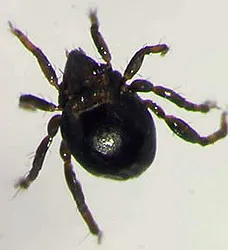 Mite |
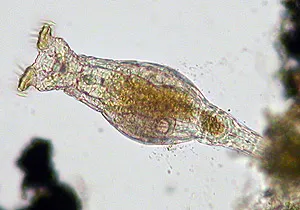 Rotifer (wheel animal) |
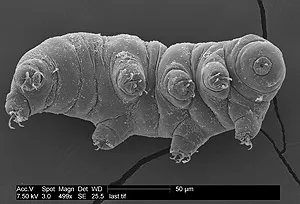 Tardigrade (water bear) |
 Springtail |
|
Unlike almost any other place on earth, invertebrates on land in Antarctica generally don't make their presence known. They don't buzz around your head, try to bite you or keep landing on your potato salad and taking off again. Neither do they leave slimy tracks across your path on damp days, hide in your shoes or scare you at night when you turn the light on.
The main thing you would notice about Antarctic terrestrial (land) invertebrates is that they are small, very small. The largest of them is a wingless midge, Belgica antarctica at a maximum of 13 mm in length. There are only 67 species of insects recorded in Antarctica, which is absolutely nothing compared to the teeming hordes on all other continents.
Another thing that characterizes them is that they live stop-go lives according to the temperature. When it rises above freezing point, they warm up (a process that often includes defrosting) and are active for a while as long as it stays warm. When it cools down again, so they slow down, stop and possibly freeze again. The go portion of their lives typically lasts for a few hours or even less than an hour while the stop portions may last the rest of the day or for weeks even months on end in the winter.
They may be small and hard to find, but terrestrial invertebrates in Antarctica are amongst the hardiest of its citizens living in the harshest environments, places where as recently as 30 years ago it was thought that nothing could live. Inevitably to find terrestrial Antarctic invertebrates, you have to go looking for them.
Why are Antarctic invertebrates of interest?
- How do they do it? The fact that they
can live in Antarctica is one reason that scientists are
interested in these invertebrates, they are much hardier
than their relatives from other parts of the world.
- How is any one factor affecting them?
Antarctica is often regarded as a giant laboratory where
things can be studied more easily than in the rest of the
world. There is little or no direct local influence from
man and there are fewer species so making observations clearer
as there are less other influencing factors to hide what
is happening.
- What can they tell us about other planets? Nothing directly probably, however Antarctica is more like other planets than anywhere else on earth, the Dry Valleys region with its constant dry cold and strong winds stands in for Mars when testing equipment and trying things out. There are organisms that live in places in Antarctica that until fairly recently were thought to be totally sterile, they can show us where life can exist and where to look for life on extra terrestrial bodies - and maybe what it might look like.
What's the problem with dealing with extreme cold?
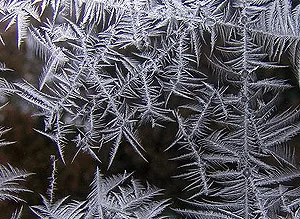 In a word - Ice. All living cells are mainly water, it serves
to dissolve and transport substances over short distances, and
give cells bulk and shape, without it there would be no life
on earth.
In a word - Ice. All living cells are mainly water, it serves
to dissolve and transport substances over short distances, and
give cells bulk and shape, without it there would be no life
on earth.
Below freezing point though, that terribly useful and vital water becomes deadly. It forms sharp ice needles which grow, piercing and destroying cell membranes and killing tissues. In humans the process causes frost bite and can result in the loss of fingers and toes if you catch it fairly quickly, the loss of arms and legs or your life if you don't.
The problem for invertebrates in Antarctica is that they are at the mercy of the external temperature, warming up and cooling down with the day or a chance patch of sunlight. The average temperature in Antarctica over the year is below freezing in most places, so the animals have to avoid having their tissues destroyed by those ice crystals.
How can animals survive freezing?
1 - Freeze avoidance - depress the freezing
point of the water in the cells. Sea water freezes at around
-1.9°C due to the dissolved salt rather than at 0°C for
pure water, the same principle can be used in body tissues.
2 - Freeze tolerance - the next step is
to make anti-freeze in the body tissues. Specific proteins act
like cushions at the end of forming ice crystals, they prevent
the further growth of the crystals. The ice forms but it is
contained.
3 - Cryoprotective dehydration
- dehydration in preparation for freeze drying. The most extreme
adaptation. Antarctic nematodes and tardigrades dry
themselves out in response
to falling temperatures before they freeze
and can stay that way for months or even years. When the temperature
warms up again enough for there to be liquid water around, they
warm up, rehydrate and continue where they left off.
Where do terrestrial invertebrates live in Antarctica?
Almost anywhere there is bare soil to give a water film and where there is productivity in the form of growth of plants such as algae, mosses or liverworts. They are also often found around the nests of birds that nest on isolated mountain peaks elevated from the surrounding ice called nunataks.
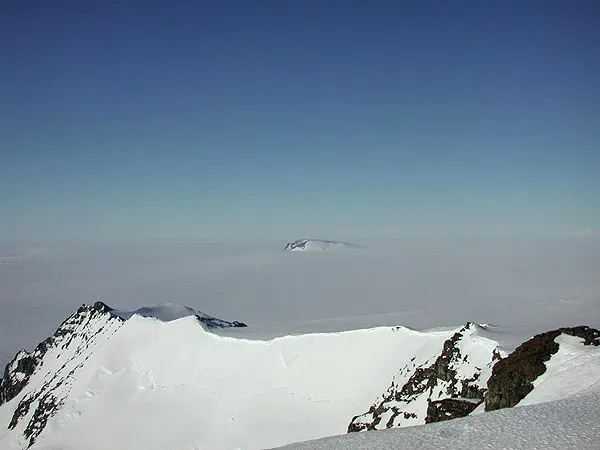
View from the peak of the nunatak Plogen, 20 kilometres away is the nunatak Basen, where a Swedish station is situated. Invertebrates are found living on these peaks separated by barren ice fields. Photo: Ingemar Jonsson.
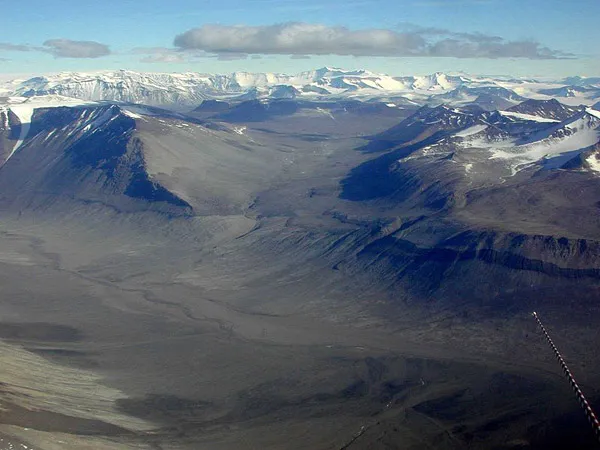
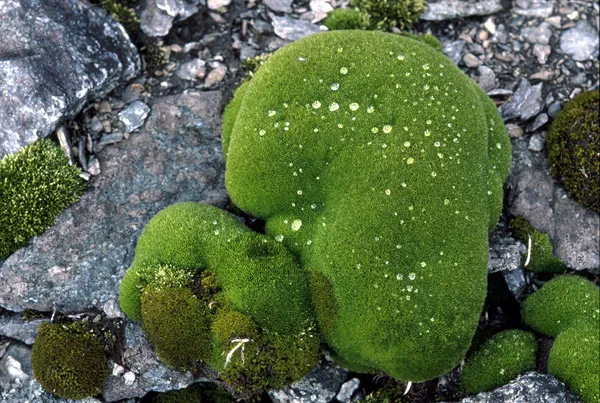
Antarctic forest, a small clump of moss on Signy Island, home to some of the largest land animals in Antarctica, the area pictured is about 45cm (18 inches) wide.
Picture credits: Ice crystals - Helen Filatova, Licensed under the Creative Commons by Share and Share Alike 3.0 license
